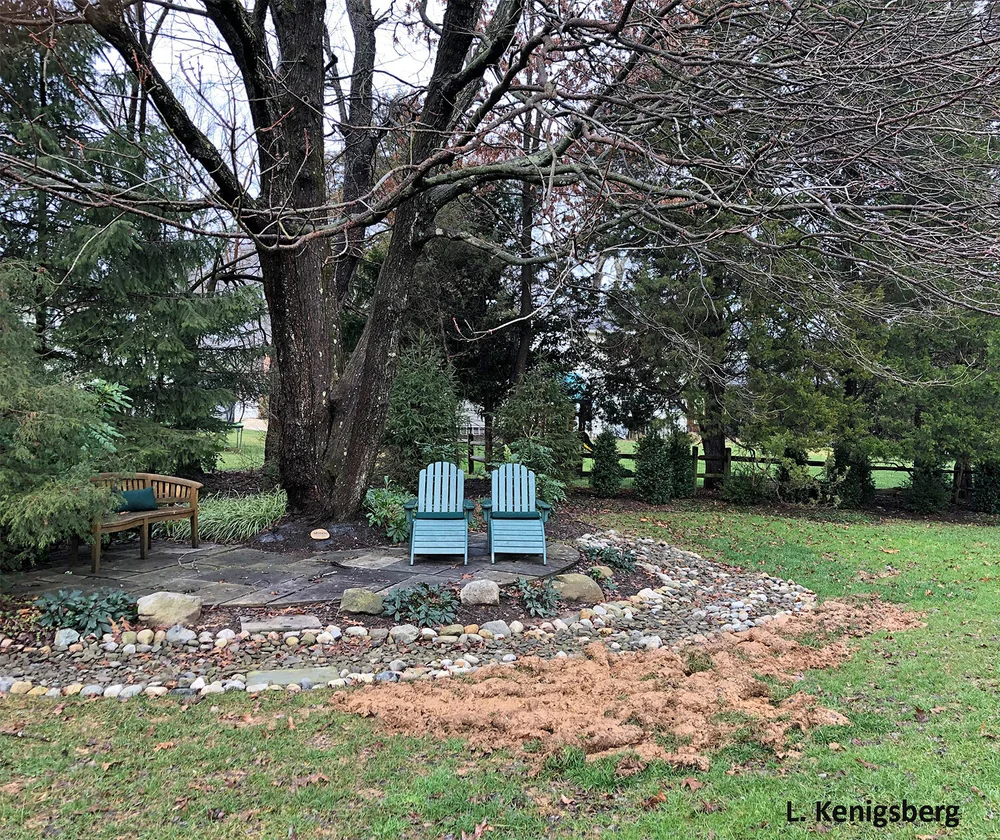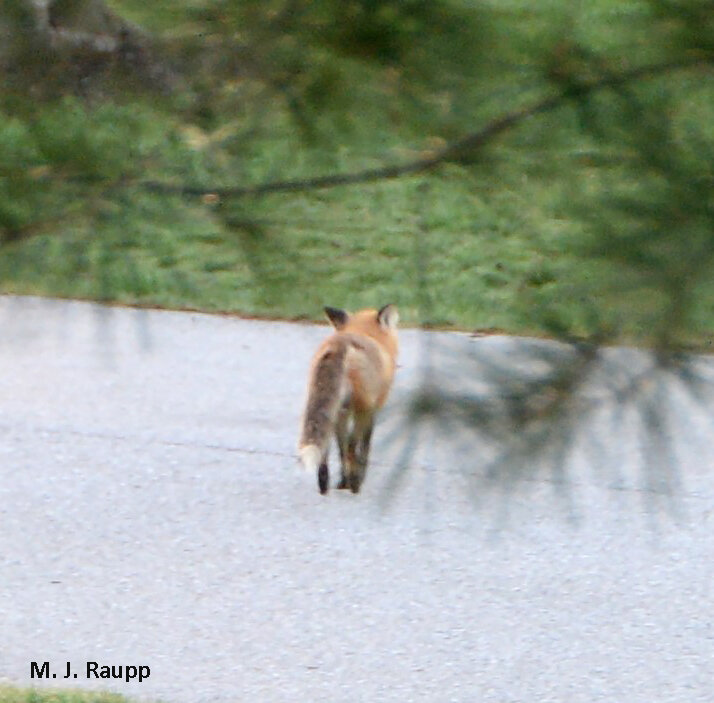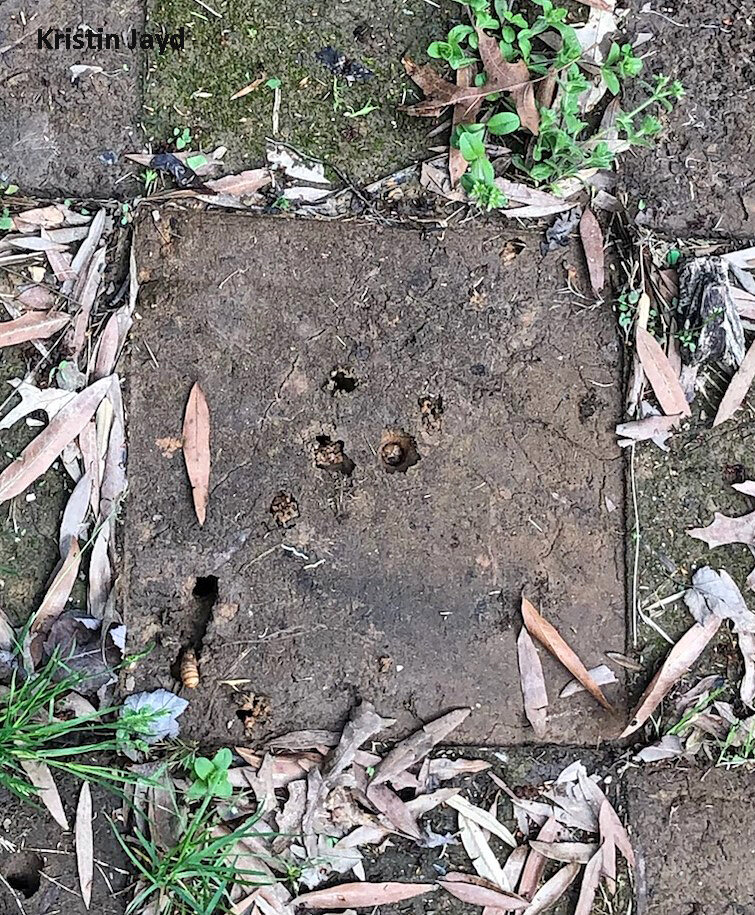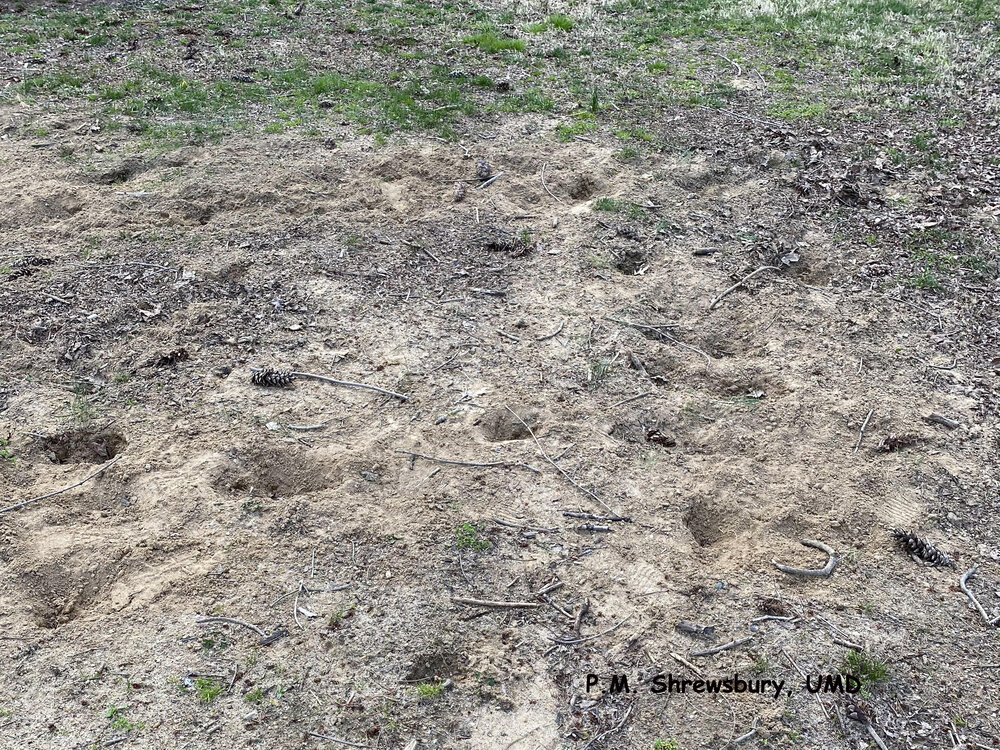Holes appear and the feast begins – Animals dining on periodical cicadas, Magicicada spp.

Perfectly shaped for moving soil, greatly expanded forelegs enable the mature nymph to create a pathway to the world above ground.

Beneath this stately old tree, a raccoon ravaged this lawn in early March. Were periodical cicadas the object of its gastronomic desire? Image credit: L. Kenigsberg
Two weeks ago we began a series on the upcoming appearance of Brood X cicadas and visited an almost ready to emerge member of the graduating class of 2021 in a shovelful of soil. Last week we learned that cicadas are not locusts. This week we’ll talk about all of the holes and other signs of cicadas that are popping up all over the place in the DMV. But first, let’s talk about the feast that is underway for small wild and domestic mammals as periodical cicadas prepare an exit strategy from their seventeen years underground. This feasting stage began almost two months ago when a curious homeowner sent fascinating images of impressive excavations of turf beneath a fine old tree. The perpetrator of this crime was a pesky raccoon intent on digging for its dinner. The lawn was, well, just collateral damage on the way to a fine meal. While the identity of the subterranean morsel was never confirmed, this type of behavior is characteristic of many small mammals that will find cicada nymphs and adults irresistible this spring and go to great lengths to find them.

After breakfasting on periodical nymphs beneath my holly tree, this handsome fox headed for the hills and almost escaped my camera.
A couple of weeks ago while emptying some coffee grinds in the compost at 6:30 AM, I surprised a very handsome and healthy red fox in the process of excavating a thirty-foot-long patch of earth beneath my stately Burford holly. A couple quick turns of the shovel revealed several Magicicada nymphs about six inches below the surface of the earth. Casual site visits to my neighbors’ gardens and further inspection of my landscape revealed several locations where fox and friends have been busy in Columbia, Maryland. Both foxes and raccoons have excellent night vision, a must for their nocturnal forays, and an extremely keen sense of smell that allows them to detect prey beneath layers of fallen leaves and soil. These wild small mammals are not the only ones whose special creature powers include super olfaction. A dog’s sense of smell is estimated to by more than 10,000 times more acute than a human’s. And yes, this week several reports arrived to the Cicada Crew posing the question: “Why is the dog digging up my yard?” Chances are good that Fido knows a good snack when he smells one. Please, just don’t let him eat too many.
Beneath a maple tree a very dusty cicada peeks out of its hole, while beneath a concrete block another nymph shapes its gallery with clever forelegs before plunging back into the tunnel, avoiding the lens of the camera.

Lifting a stepping stone may reveal cicada nymphs peering out of their escape tunnels. Image credit: Kristin Jayd
Now is an excellent time for a suburban safari to your backyard to spot signs of the arrival of periodical cicadas, which could happen sometime soon. Look for holes in the soil about the size of a dime within the dripline beneath trees that have been in the ground for seventeen years or more. Oak, maples, crabapples, and hollies seem to be the big winners in my landscape at the moment. In addition to holes, periodical cicadas often build domed caps known as turrets over their escape tunnels. This may be more common in wetter soils. If your landscape includes stepping stones or slate pathways over soil, lift a few and you may discover lateral tunnels as cicadas encounter the impenetrable barrier and attempt to make their way to the edge of the barricade to reach the world above ground.

Throughout the neighborhood small wild and domestic animals are feasting on Brood X, leaving behind divots in the earth. Image credit: Paula Shrewsbury, UMD
No holes under trees? Don’t panic, new holes are showing up in landscapes on a daily basis. Reports of cicada nymphs above ground are also arriving. In fact, while raking up leaves and branches yesterday, I unearthed several nymphs that must have been dislodged from the soil as I removed the leafy layer above their galleries. Coloration of their exoskeleton indicated that they were not quite ready to make the jailbreak from the earth. I returned them to the soil. Recently, someone asked how cicadas moved about underground and how did they construct their exit galleries? The answer is clever adaptations. Their forelegs bear greatly expanded femurs and tibias which act like the blade of a shovel to move soil. Millions of years of evolution for a life in two worlds, one underground and one above the earth, have perfected the tools necessary for cicadas to succeed in both.
Acknowledgements
Bug of the Week thanks L. Kenigsberg for providing the nice image of lawn pillaged by a raccoon that served as the inspiration for this episode. Kristin Jayd and Paula Shrewsbury also provided images and assisted with videography.
Join The Bug Guy tonight for an in-depth Zoom event with the Prince Georges County Alumni Network: Return of Periodical Cicadas – Fear, Fascination and Fun in 2021. University of Maryland Professor Emeritus Mike Raupp will explore the natural history, ecology, and behavior of the seven species of periodical cicadas indigenous to North America. Preregistration required.
This post appeared first on Bug of the Week